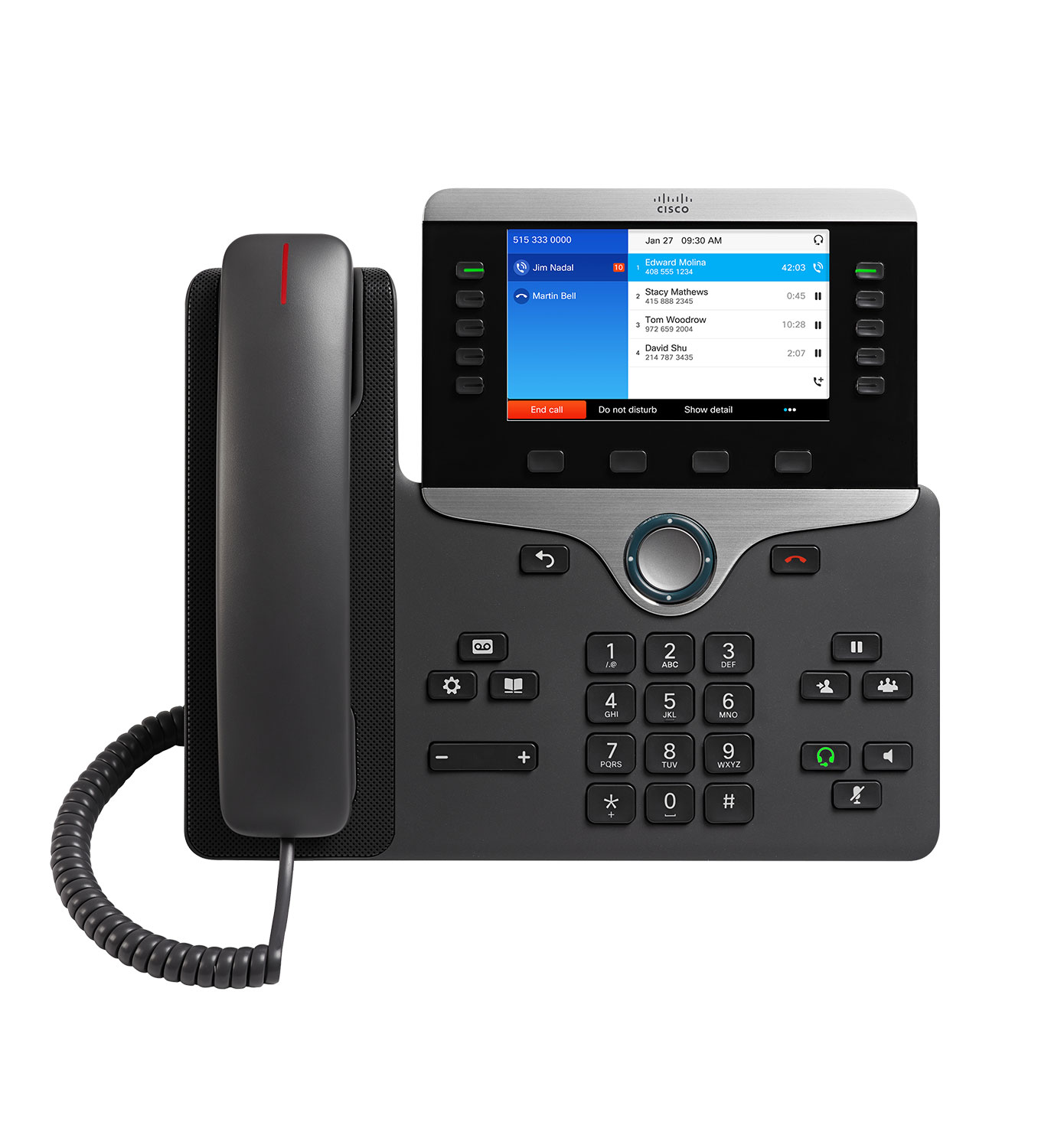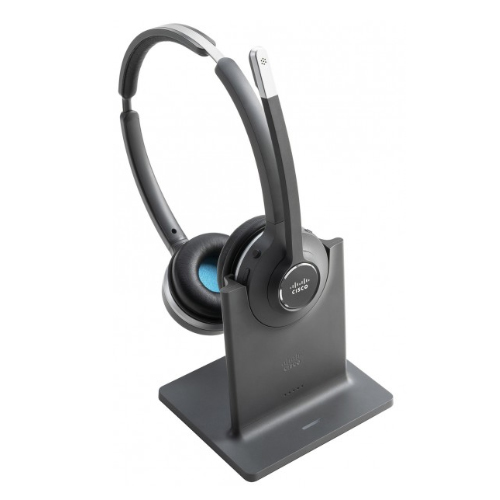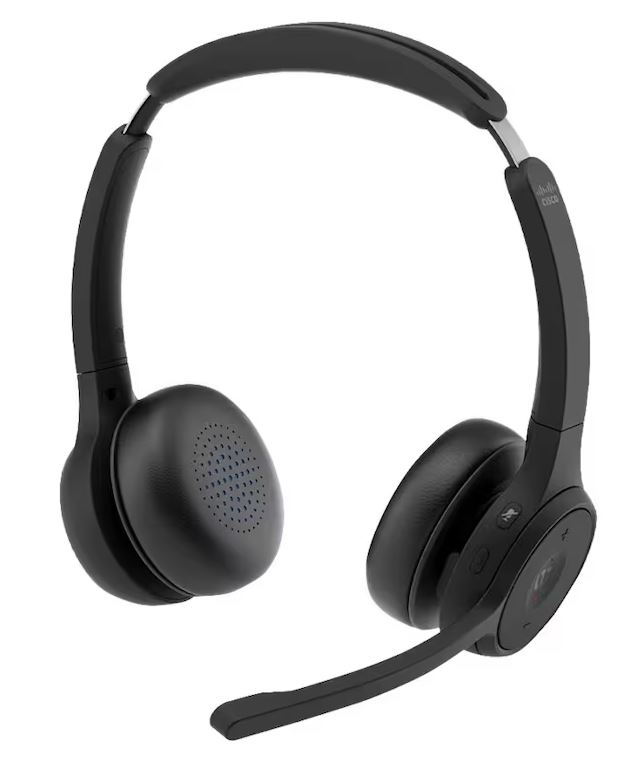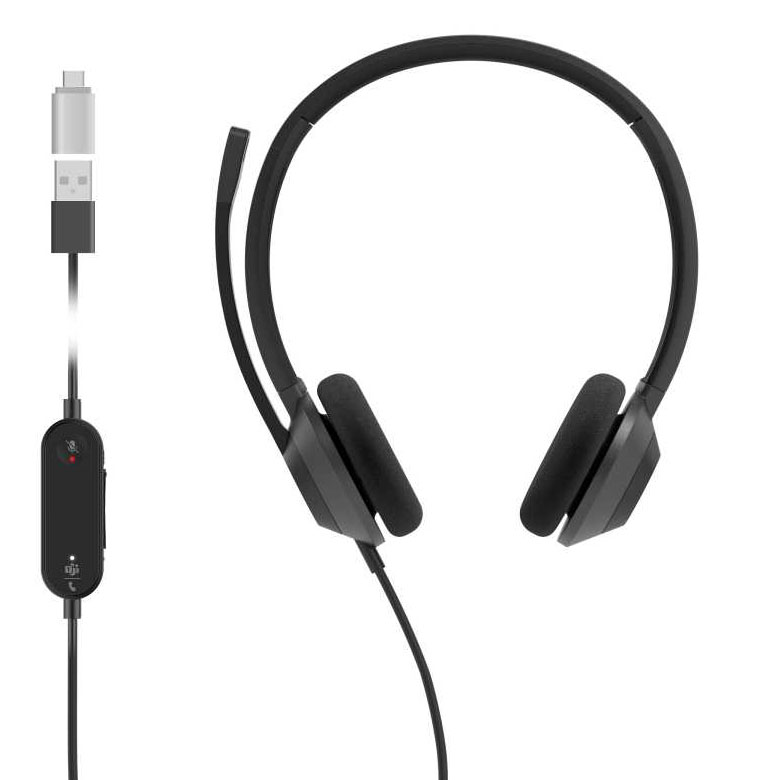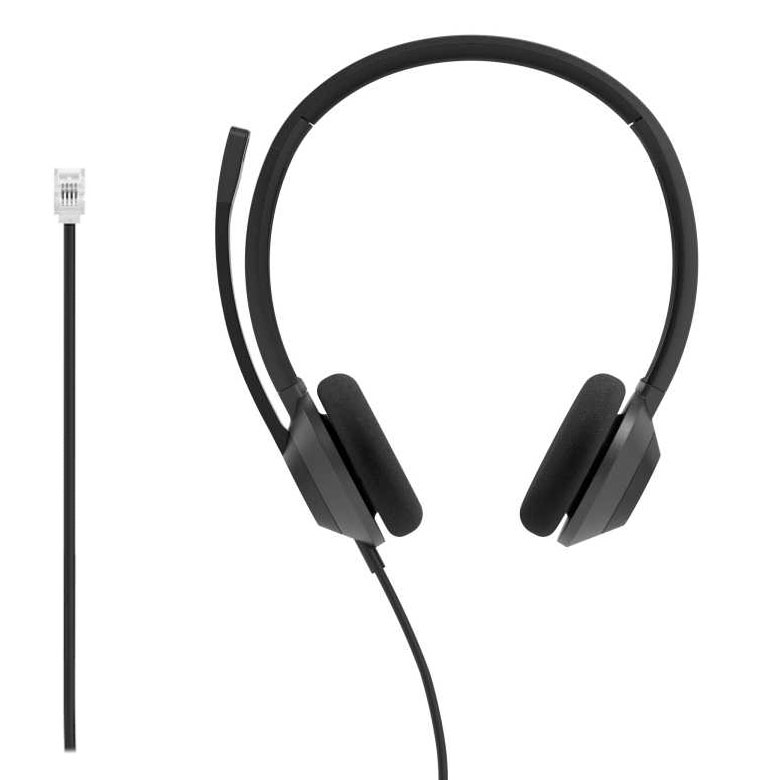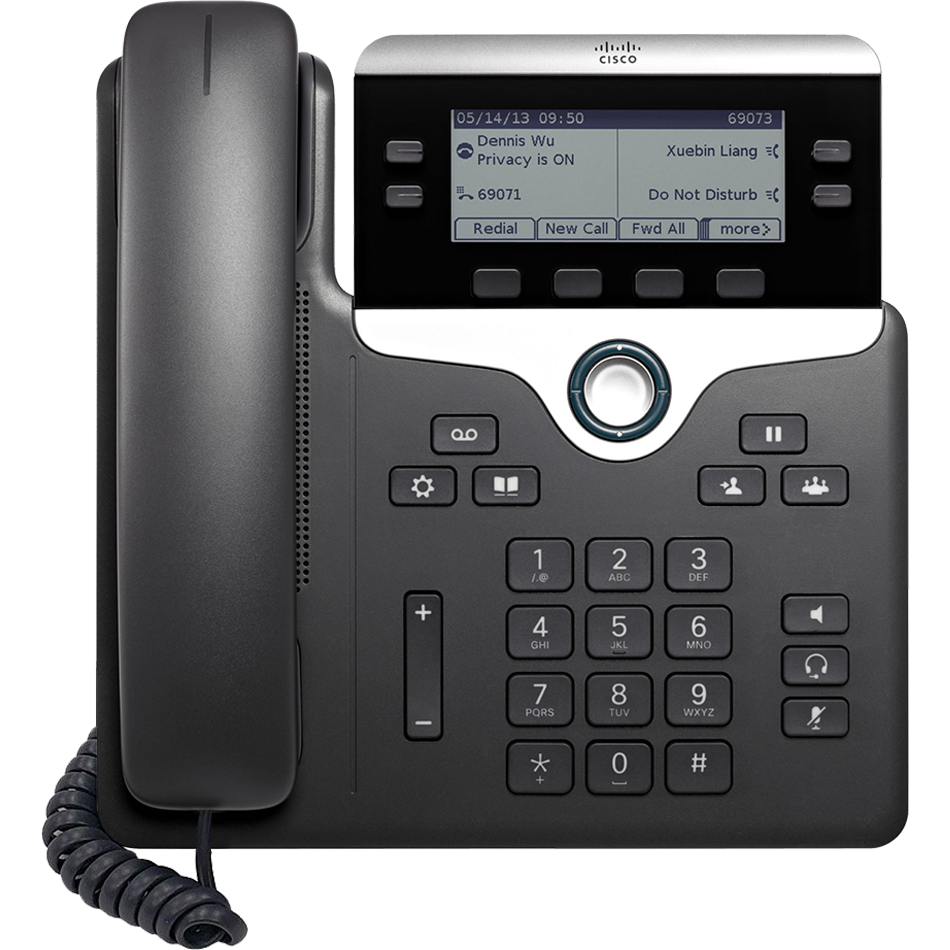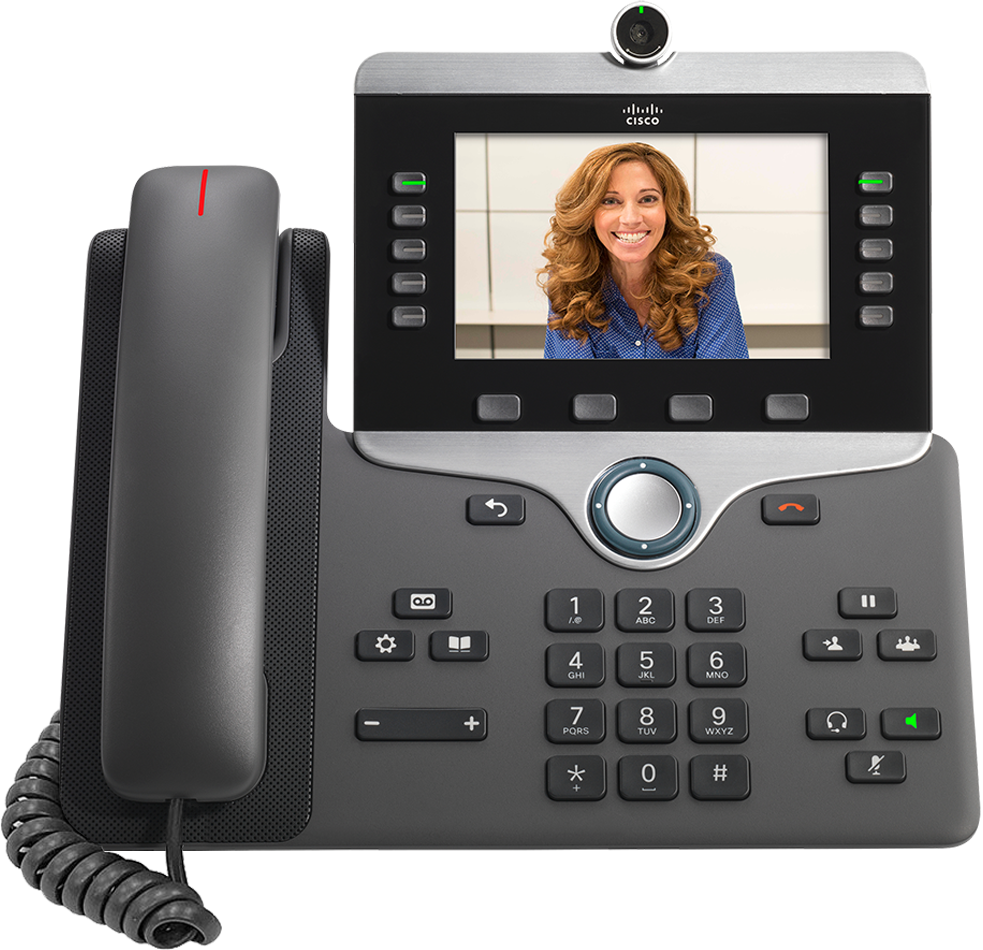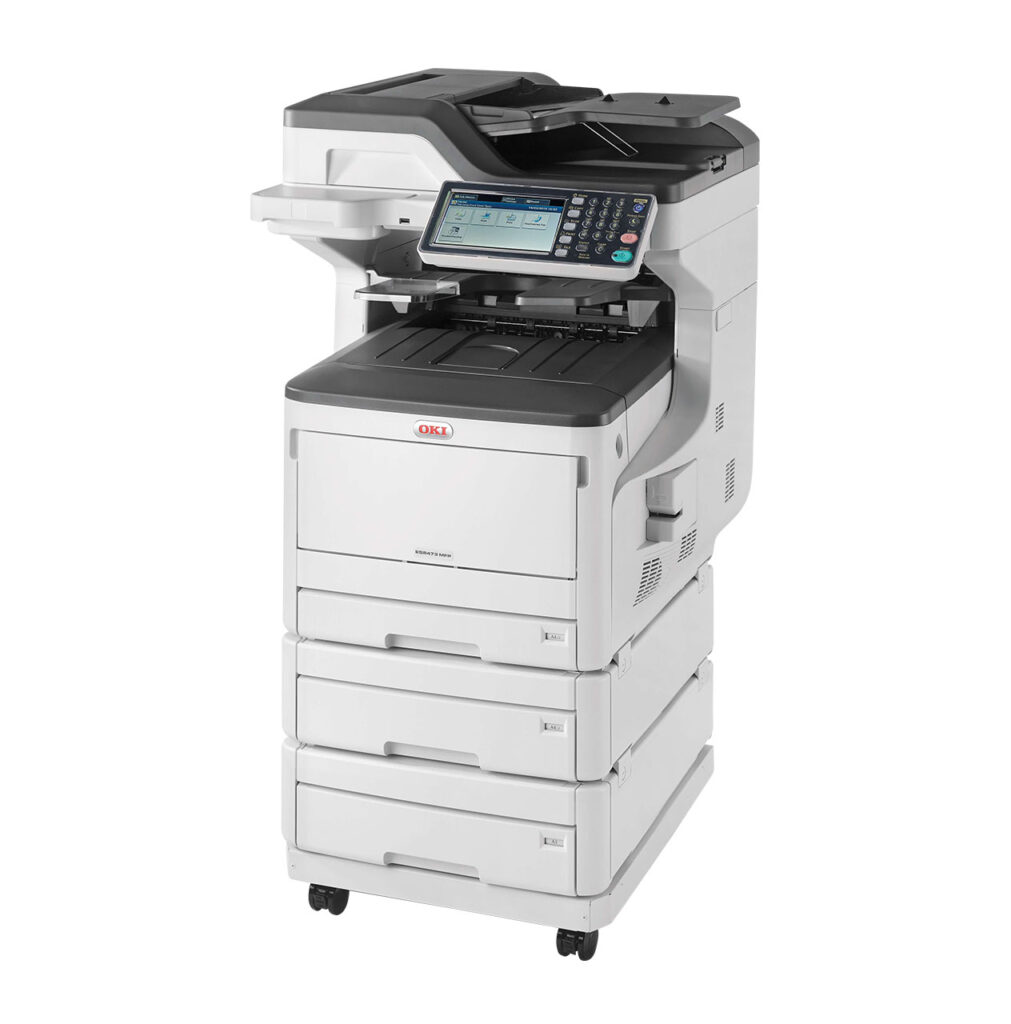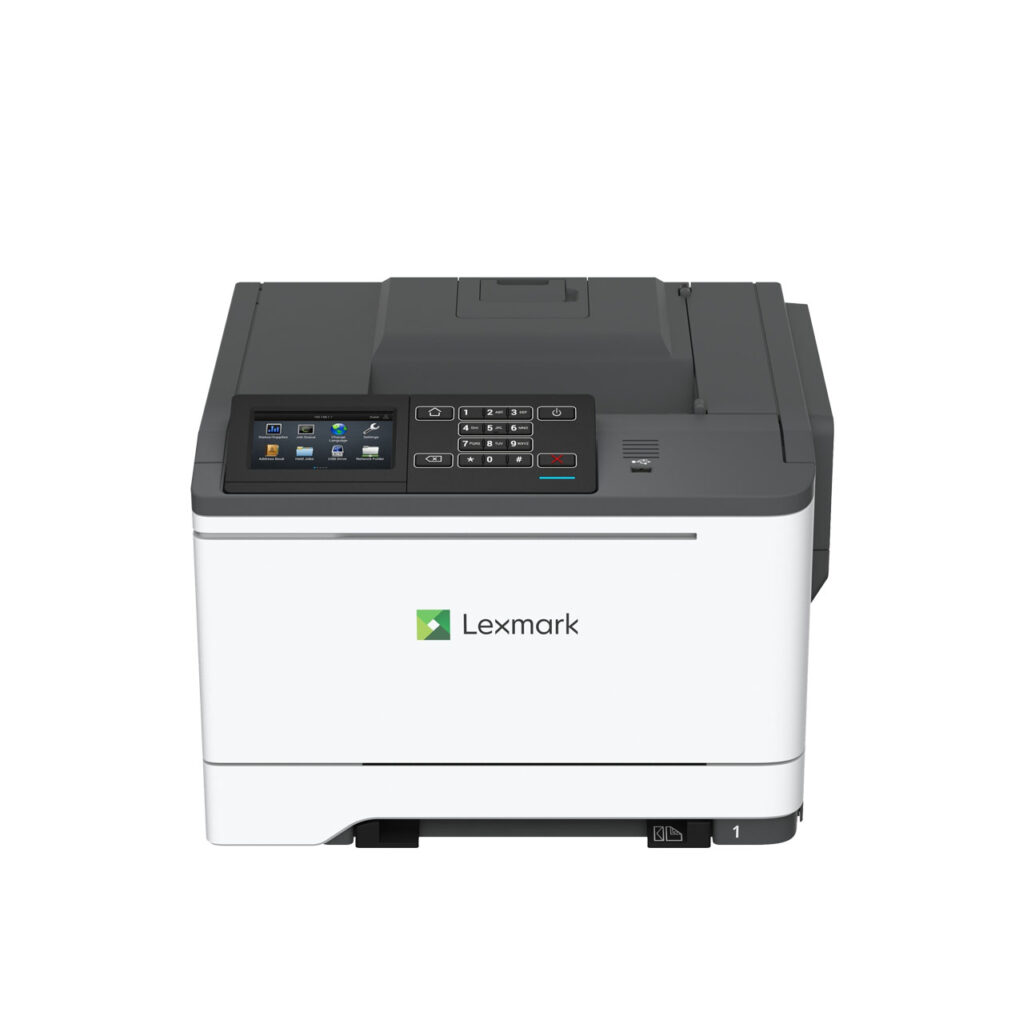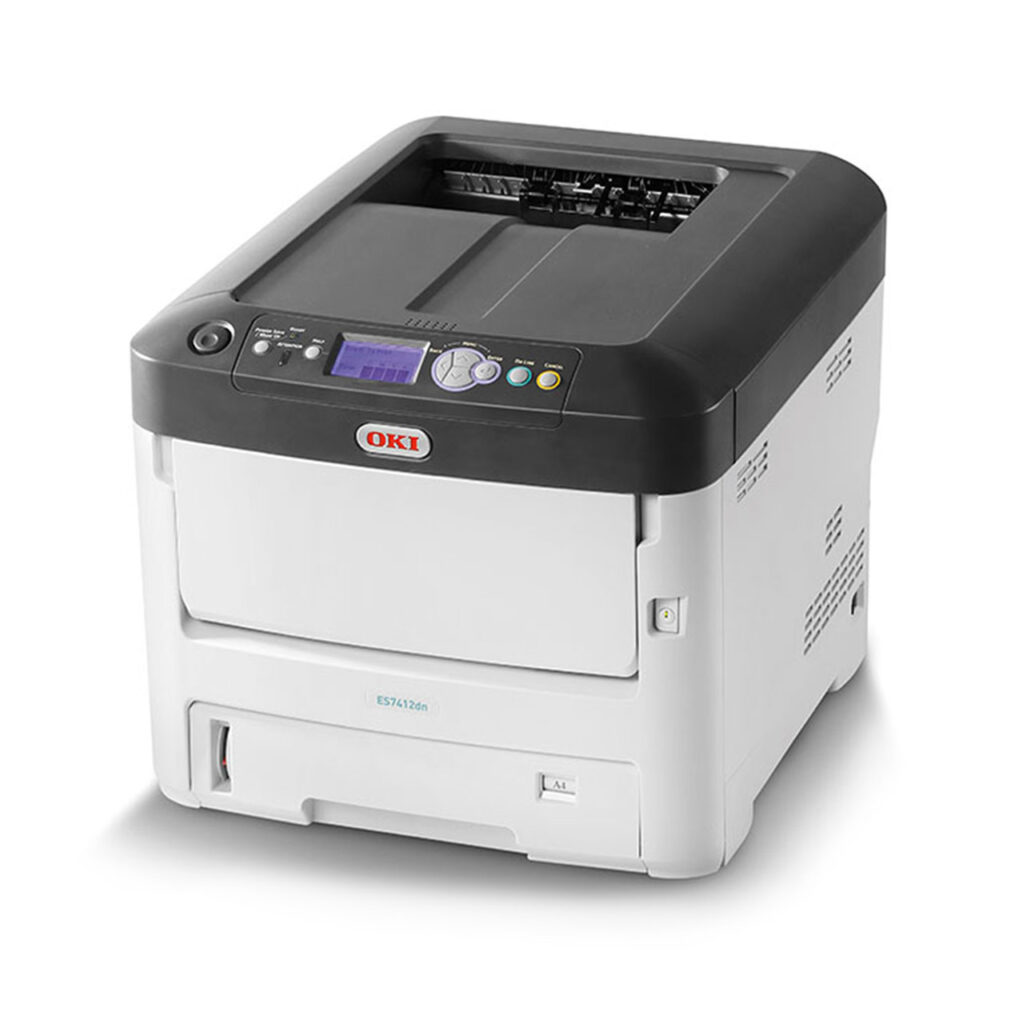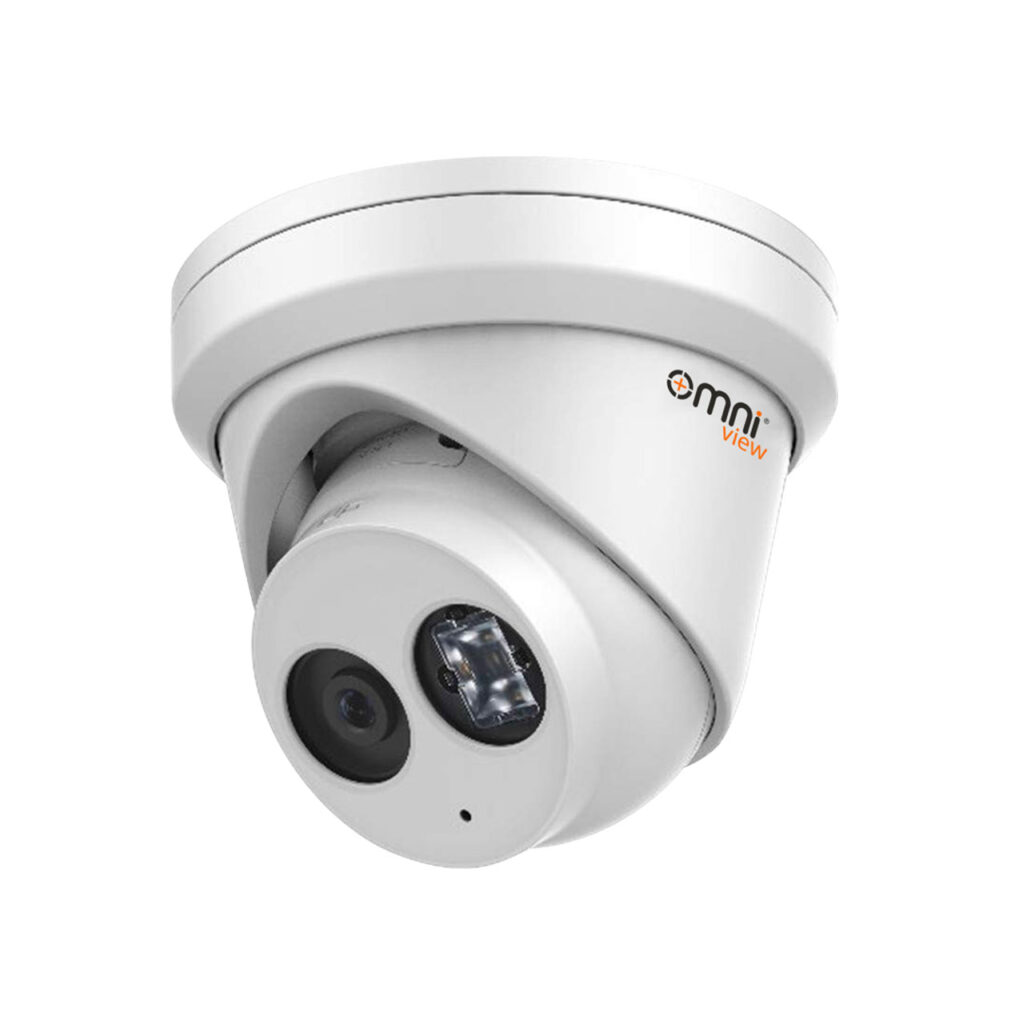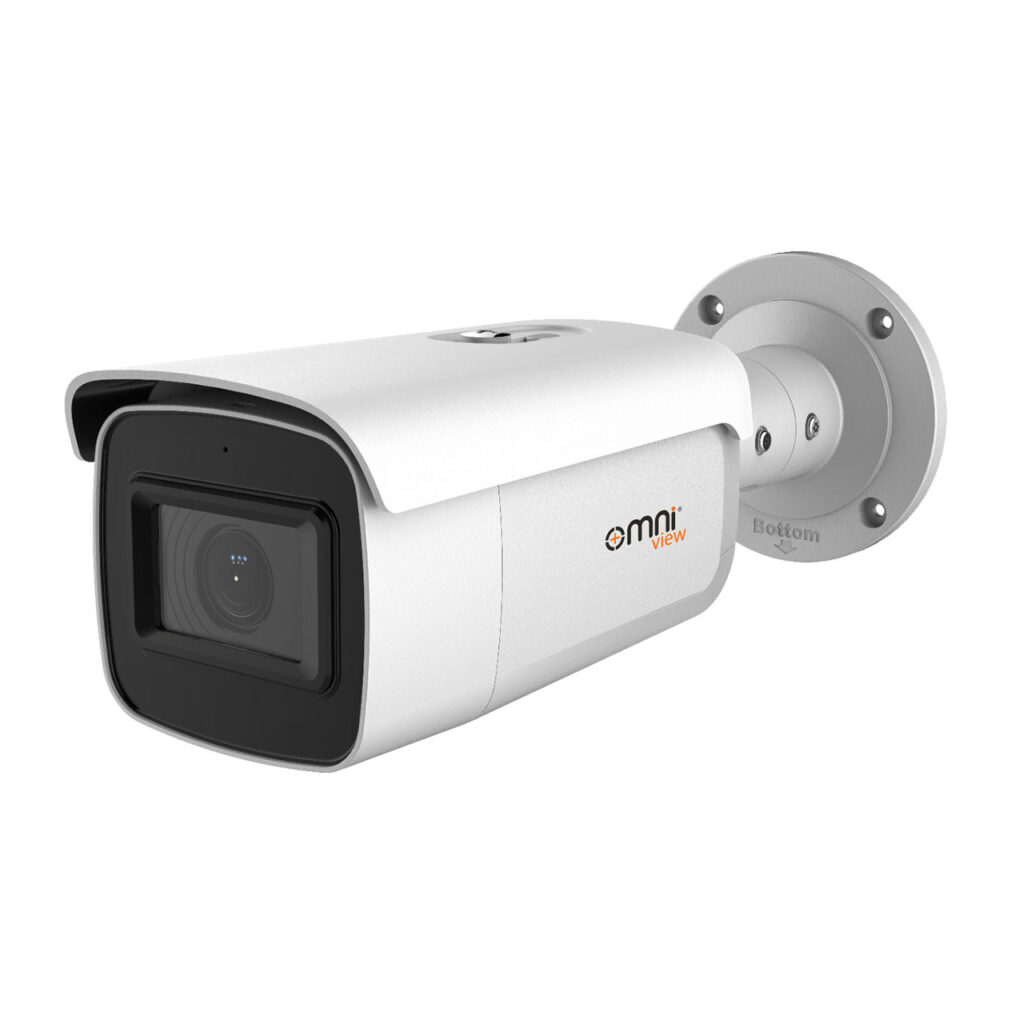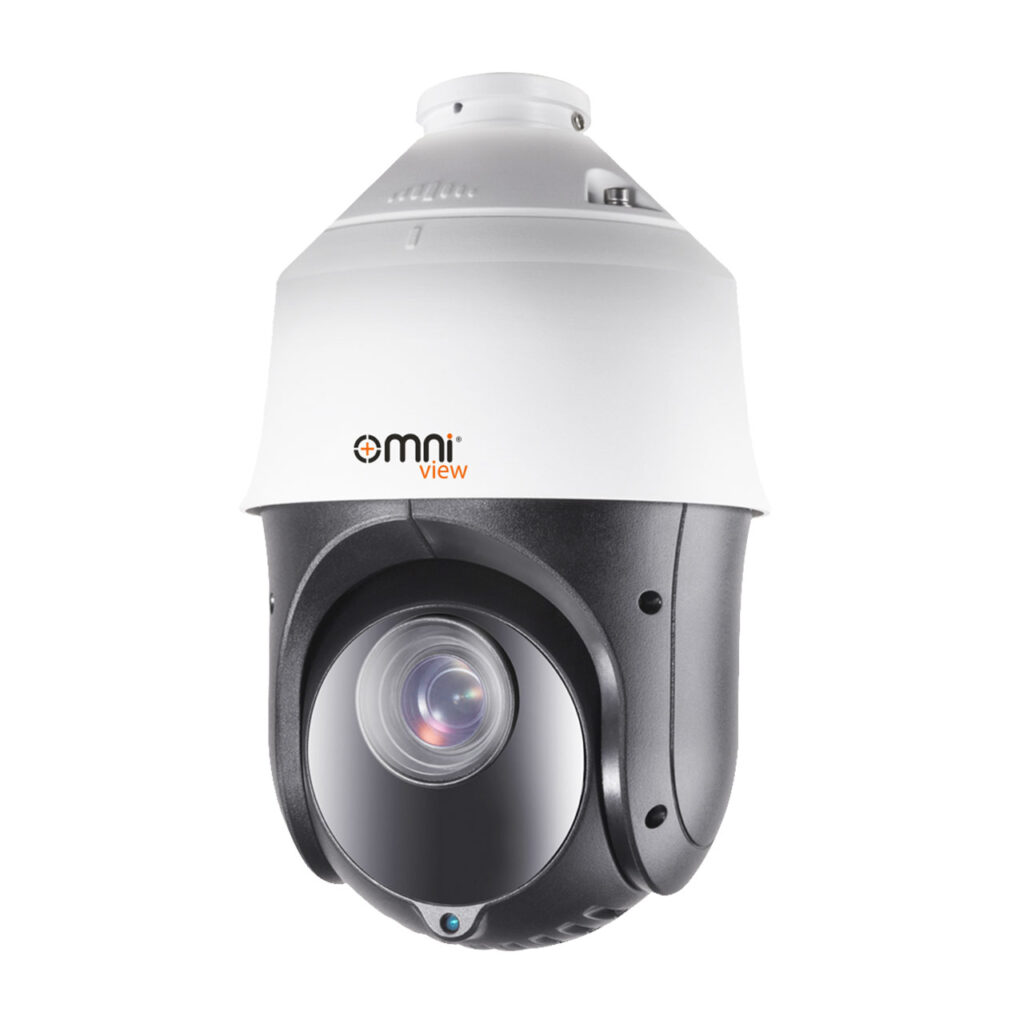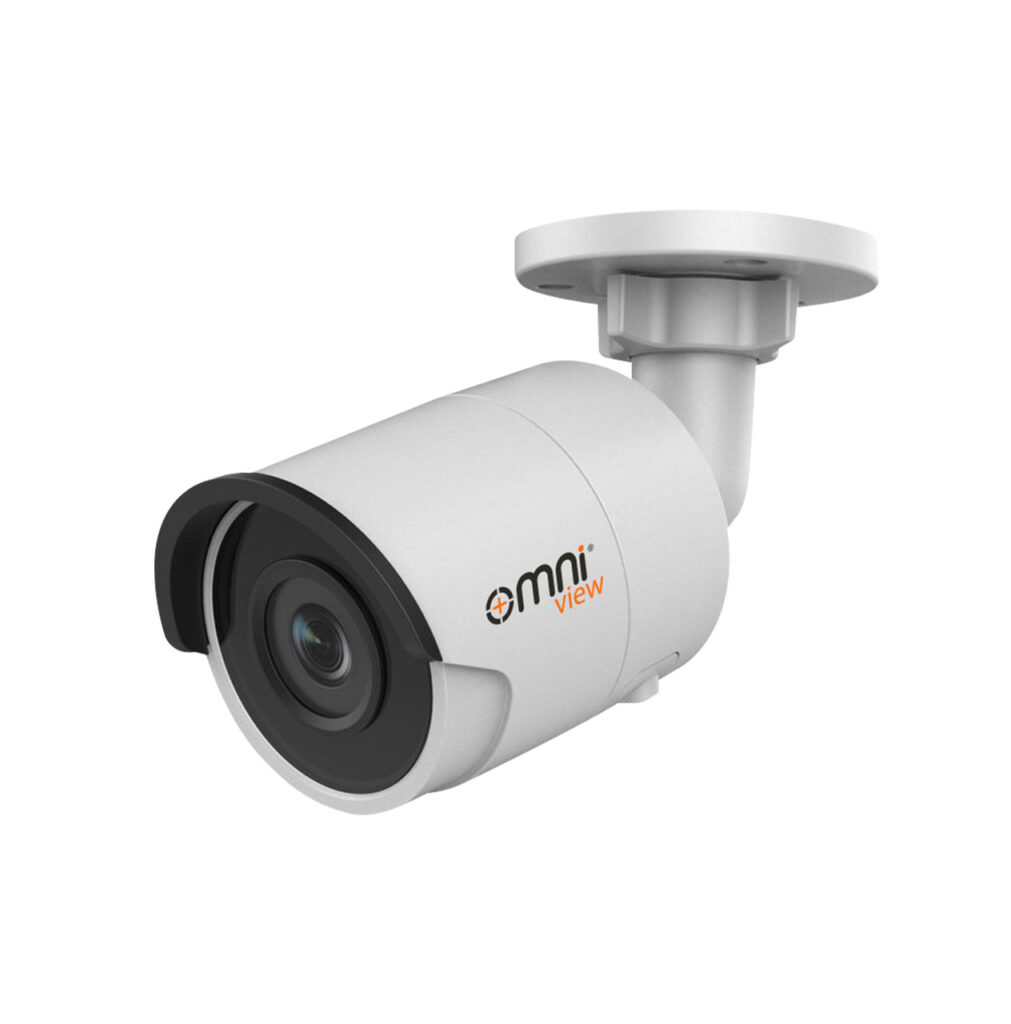Cisco IP Phone 8861
The IP Phone 8861 delivers highly secure, easy-to-use, mission-critical, comprehensive VoIP communications and telephony feature integration with your personal mobile devices for your entire organization. It also offers flexible deployment options: Cisco on-premises, hosted, Webex Calling, and third-party call control offer flexible deployment options.

DISPLAY
5-inch widescreen VGA (800x480px), 24-bit colour

WIDEBAND AUDIO
G.722 on handset, speakerphone and headset.

MOBILE INTEGRATION
Integration with personal mobile devices using Cisco Intelligent Proximity for Mobile Voice.

HEADSET PORTS
Choice of wired, USB and Bluetooth headsets from Cisco third-party vendor partners

KEY EXPANSION MODULE
Option to add in up to two IP Phone 8800 Key Expansion Module.
Enhanced User Collaboration
- Exceptional clarity in VoIP communications with wideband audio
- Integration with personal mobile devices using Cisco Intelligent Proximity for Mobile Voice
- High-resolution, widescreen color display
- Optional Cisco IP Phone 8800 Key Expansion Module to simplify dialing and offer expanded status detail
- Choice of wired, Bluetooth, and USB headsets from third-party vendors
Easier, More Cost-Effective Administration
- Flexible deployment options include Cisco on-premises, hosted, and Webex Calling.
- Cisco Expressway gives remote workers single sign-on access without requiring a VPN client
- Cisco EnergyWise reduces energy costs and carbon footprint in off-work hours
- Gigabit Ethernet, 802.11 Wi-Fi, and 802.3af/at Power over Ethernet reduce installation and infrastructure costs
Table 1. Features and benefits
| Features | Benefits |
|
Hardware Features |
|
|
Ergonomic design |
The phone offers an easy-to-use interface and provides a traditional telephony-like user experience.
|
|
Graphical display |
The 800 × 480, 24-bit color, 5-in. WVGA display provides scrollable access to calling features and text-based XML applications.
|
|
Handset |
The handset is a standard wideband-capable audio handset (connects through an RJ-9 port).
The standard coiled cord has a custom end for concealed cable routing beneath the phone (cord length is approximately 21 in. [55 cm] coiled and up to 72 in. (183 cm) extended).
The handset is Hearing Aid-Compatible (HAC) and meets Federal Communications Commission (FCC) loudness requirements for the Americans with Disabilities Act (ADA). You can achieve Section 508 loudness requirements by using industry-standard inline handset amplifiers such as Walker Equipment W-10 or CE-100 amplifiers. The dial pad is also ADA-compliant.
|
|
Speaker phone |
The full-duplex speakerphone gives you flexibility in placing and receiving calls with hands free. For added security, the audible Dual Tone Multifrequency (DTMF) tones are masked when the speakerphone mode is used.
|
|
Analog headset |
The analog headset jack is a standard wideband-capable RJ-9 audio port.
|
|
AUX port |
You can use an auxiliary port to support electronic hookswitch control with a third-party headset connected to it.
|
|
External audio ports |
The phone has a 3.5-mm stereo line in/out jack (for optional external headset, speakers, or headphones).
|
|
USB |
Two USB ports enhance the usability of call handling by enabling wired or wireless headsets, as well as provide charging capability to mobile devices such as smartphones or tablets.
A side USB port provides up to 500mA power output at 5V or 2.5W. A back USB (in yellow) port provides 500mA power output and is upgradeable to support up to 2.1A power output at 5V or 10.5W. |
|
Ethernet switch |
An internal 2-port Cisco Ethernet switch allows for a direct connection to a 10/100/1000BASE-T Ethernet network (IEEE 802.3i/802.3u/802.3ab) through a RJ-45 interface with single LAN connectivity for both the phone and a co-located PC.
The system administrator can designate separate VLANs (IEEE 802.1Q) for the PC and phone, providing improved security and reliability of voice and data traffic.
|
|
Bluetooth |
The phone offers Bluetooth 3.0 Enhanced Data Rate (EDR) Class 1 technology (up to 66-ft [20m] range).
Hands-Free Profile (HFP) is supported for untethered headset connections and voice communications.
Phone Book Access Profile (PBAP) is supported for phone book object exchange between devices.
|
|
Wi-Fi client |
As an alternative to wired Ethernet, the Cisco IP Phone 8861 supports a Wi-Fi radio with integrated antenna enabling connectivity to a Wi-Fi access-point infrastructure, thereby saving on the labor costs of pulling Ethernet cables to every work location. Complete Wi-Fi specifications are included in Table 4 later in this document.
|
|
Keys |
The phone has the following keys:
Line keys Soft keys Back and release keys Four-way navigation and select keys Hold/Resume, Transfer, and Conference keys Messaging, Application, and Directory keys Standard keypad Volume-control toggle key Speakerphone, headset, and mute keys |
|
Backlit indicator |
The phone supports backlit indicators for the audio path keys (handset, headset, and speakerphone), select key, line keys, and message waiting.
|
|
Replaceable bezel |
The phone includes a black bezel; an optional silver bezel is also orderable separately.
|
|
Dual-position foot stand |
The display is easy-to-view and the buttons and keys are easy-to-use. The two-position foot stand supports viewing angles of 35 and 50 degrees; you can remove the foot stand for wall mounting, with mounting holes located on the base of the phone.
|
|
Wall-mountable |
You can install the phone on a wall using an optional wall-mount kit (orderable separately).
|
|
Key Expansion Module (KEM) |
The phone supports up to three KEMs to expand from 5- to 113-line buttons. You have the convenience of many speed dials or programmable features.
|
|
Physical security |
The phone is compatible with the Kensington Security Slot (K-Slot) antitheft system.
|
|
Power Features |
|
|
IEEE Power over Ethernet (PoE) |
IEEE Power over Ethernet class 4. The phone is compatible with both IEEE 802.3af and 802.3at switch blades and supports both Cisco Discovery Protocol and Link Layer Discovery Protocol – Power over Ethernet (LLDP-PoE).
|
|
Cisco IP Phone Power Cube 4 |
This optional power cube is used as an AC-to-DC (48V) power supply for non-PoE deployments. Use of the power cube 4 also requires the use of one of the corresponding AC country cords
|
|
Call-Control Support |
|
|
Cisco Unified Communications Manager |
8.5.1 (Non-Secured mode Only)
8.6.2
9.1.2
10.5.2
11.0 and later
|
|
Cisco Unified Communications Manager Express (Unified CME) |
10.0 and later through fast track
|
|
Cisco Business Edition 6000 (BE 6000) |
8.6.2
9.1.2
10.5.2
11.0 and later
|
|
Cisco Hosted Collaboration Solution (HCS) |
8.6.2 and later (using supported UCM versions above)
|
Table 2. Features and specifications of Cisco IP Phone 8861
|
Features |
Specifications |
|
Automatic Gain Control
Comfort Noise Generation
Silence Suppression/Voice Activity Detection
Acoustic Echo Cancellation (AEC)
Dynamic Noise Reduction
|
|
|
Key call features support |
+ Dialing
Abbreviated dialing
Adjustable ring tones and volume levels
Adjustable display brightness
Agent greeting
Auto-answer
Auto-detection of headset
cBarge
Busy Lamp Field (BLF)
Busy Lamp Field (BLF) Pickup
Busy Lamp Field (BLF) speed dial
Callback
Call forward
Call forward notification
Call filter
Call history lists
Call park
Call pickup
Call timer
Call waiting
Call chaperone
Caller ID
Corporate directory
Conference, including traditional Join feature
Cross Cluster Extension Mobility (EMCC)
Direct transfer
Extension mobility
Fast-dial service
Forced access codes and client matter codes
Group call pickup
Hold
Intercom
Immediate divert
Malicious-caller ID
Message-Waiting Indicator (MWI)
Meet-me conference
Mobility
Music on Hold (MoH)
Mute
Network profiles (automatic)
On- and off-network distinctive ringing
Personal directory
PickUp
Predialing before sending
Privacy
Private Line Automated Ringdown (PLAR)
Redial
Ring tone per line appearance
Service URL
Shared line
Silent monitoring and recording
Speed dial
Time and date display
Transfer
Uniform Resource Locator (URI) dialing
Visual voice mail
Voice mail
Whisper coaching
|
|
Electronic hookswitch |
You can control the hookswitch electronically with a third-party headset connected to either the USB or auxiliary port, or directly paired with the phone through Bluetooth.
|
|
Cisco Intelligent Proximity |
Audio path moving sends audio through the IP Phone 8861 for a mobile device-connected call.
Call history synchronization allows you to view placed and missed calls of your mobile device from the IP Phone 8861.
Contact synchronization allows you to synchronize the contact objects from your mobile device to your IP Phone 8861
|
|
Quality-of-Service (QoS) options |
The phone supports Cisco Discovery Protocol and 802.1Q/p standards, and can be configured with an 801.1Q VLAN header containing the VLAN ID overrides configured by the Admin VLAN ID.
|
|
Network features |
Session Initiation Protocol (SIP) for signaling
Session Description Protocol (SDP)
IPv4 and IPv6
User Datagram Protocol (UDP) (used only for Real-Time Transport Protocol [RTP] streams)
Dynamic Host Configuration Protocol (DHCP) client or static configuration
Gratuitous Address Resolution Protocol (GARP)
Domain Name System (DNS)
Trivial File Transfer Protocol (TFTP)
Secure Hypertext Transfer Protocol (HTTPS)
VLAN
Real-Time Transport Protocol (RTP)
Real-Time Control Protocol (RTCP)
Cisco Peer-to-Peer Distribution Protocol (PPDP)
Cisco Discovery Protocol
LLDP (including LLDP-MED)
Switch speed auto-negotiation
|
|
Security features |
Secure boot
Secure credential storage
Device authentication
Configuration file authentication and encryption
Image authentication
Random bit generation
Hardware cryptographic acceleration
Certificate Authority Proxy Function (CAPF)
Manufacturer-Installed Certificates (MIC)
Locally Significant Certificates (LSC)
Ethernet 802.1x supplicant options: Extensible Authentication Protocol-Flexible Authentication via Secure Tunneling (EAP-FAST) and Extensible Authentication Protocol-Transport Layer Security (EAP-TLS)
Signaling authentication and encryption using TLS
Media authentication and encryption using SRTP
HTTPS for client and server
Secure Shell (SSH) Protocol server
Secure Sockets Layer (SSL)-based VPN client
|
|
Physical dimensions |
9.02 x 10.13 x 1.57 in. (229.1 x 257.34 x 40 mm) (exclude foot stand)
|
|
Weight |
2.62 lb (1.19 kg)
|
|
Phone-casing composition |
Polycarbonate Acrylonitrile Butadiene Styrene (ABS) textured plastic; Cosmetic class A
|
|
Operational temperature |
32 to 104°F (0 to 40°C)
|
|
Nonoperational temperature shock |
14 to 140°F (-10 to 60°C)
|
|
Humidity |
Operating 10 to 90%, noncondensing
Nonoperating 10 to 95%, noncondensing
|
|
Language support |
Arabic (Arabic Area)
Bulgarian (Bulgaria)
Catalan (Spain)
Chinese (China)
Chinese (Hong Kong)
Chinese (Taiwan)
Croatian (Croatia)
Czech (Czech Republic)
Danish (Denmark)
Dutch (Netherlands)
English (United Kingdom)
Estonian (Estonia)
French (France)
French (Canada)
Finnish (Finland)
German (Germany)
Greek (Greece)
Hebrew (Israel)
Hungarian (Hungary)
Italian (Italy)
Japanese (Japan)
Latvian (Latvia)
Lithuanian (Lithuania)
Korean (Korea Republic)
Norwegian (Norway)
Polish (Poland)
Portuguese (Portugal)
Portuguese (Brazil)
Romanian (Romania)
Russian (Russian Federation)
Spanish (Columbia)
Spanish (Spain)
Slovak (Slovakia)
Swedish (Sweden)
Serbian (Republic of Serbia)
Serbian (Republic of Montenegro)
Slovenian (Slovenia)
Thai (Thailand)
Turkish (Turkey)
|
|
Certification and compliance |
Regulatory compliance
CE Markings per directives 2004/108/EC and 2006/95/EC Safety
UL 60950 Second Edition CAN/CSA-C22.2 No. 60950 Second Edition EN 60950 Second Edition (including A11 & A12) IEC 60950 Second Edition (including A11 & A12) AS/NZS 60950 GB4943 EMC – Emissions
47CFR Part 15 (CFR 47) Class B AS/NZS CISPR22 Class B CISPR22: 2005 w/Amendment 1: 2005 Class B EN55022: 2006 w/Amendment 1: 2007 Class B ICES003 Class B VCCI Class B EN61000-3-2 EN61000-3-3 KN22 Class B EMC – Immunity
EN55024 CISPR24 EN60601-1-2 KN24 Armadillo Light Telecom
FCC Part 68 HAC CS-03-HAC AS/ACIF S004 AS/ACIF S040 NZ PTC 220 Industry Standards: TIA 810 and TIA 920 Industry Standards: IEEE 802.3 Ethernet, IEEE 802.3af and 802.3at Korea (RRA Public Notification 2010-36, Nov 01, 2010) Korea (RRA Announce 2011-2, Feb28, 2011) Radio
FCC Part 15.247 (CFR 47) FCC Part 2.1093 (BT RF Exposure TR) RSS-102 (BT RF Exposure TR) RSS-210 EN 300.328 EN50385 (BT RF Exposure TR) EN 301-489-1 EN 301-489-17 EN 301-893 NCC LP0002 Korea (RRL No. 2006-128, RRL No. 2006-129) Japan Bluetooth GFSK/EDR |
Table 3. Wi-Fi features and specifications
| Feature | Specifications | ||
|
Protocols |
IEEE 802.11a, 802.11b, 802.11g, 802.11n, and 802.11ac |
||
|
Frequency bands and operating channels |
2.412-2.472 GHz (channels 1-13)
5.180-5.240 GHz (channels 36-48)
5.260-5.320 GHz (channels 52-64)
5.500-5.700 GHz (channels 100-140)
5.745-5.825 GHz (channels 149-165)
IEEE 802.11d is used to identify available channels. |
||
|
Non-overlapping channels |
2.4 GHz (20-MHz channels): Up to 3 channels
5 GHz (20-MHz channels): Up to 24 channels
5 GHz (40-MHz channels): Up to 9 channels
5 GHz (80-MHz channels): Up to 4 channels
|
||
|
Operating modes |
Auto (default), preference to strongest RSSI for 2.4 or 5 GHz
2.4 GHz only
5 GHz only
|
||
|
Data rates |
802.11a: 6, 9, 12, 18, 24, 36, 48, and 54 Mbps
802.11b: 1, 2, 5.5, and 11 Mbps
802.11g: 6, 9, 12, 18, 24, 36, 48, and 54 Mbps
802.11n: HT MCS 0, MCS 1, MCS 2, MCS 3, MCS 4, MCS 5, MCS 6, and MCS 7
802.11ac: VHT MCS 0, MCS1, MCS 2, MCS 3, MCS 4, MCS 5, MCS 6, MCS 7, MCS 8, and MCS 9 (MCS9 available with VHT40 and VHT80 only)
|
||
|
2.4-GHz receiver sensitivity |
IEEE 802.11b: 1 Mbps: -98 dBm
2 Mbps: -96 dBm
5.5 Mbps: -93 dBm
11 Mbps: -91 dBm
|
IEEE 802.11g: 6 Mbps: -95 dBm
9 Mbps: -94 dBm
12 Mbps: -93 dBm
18 Mbps: -90 dBm
24 Mbps: -87 dBm
36 Mbps: -84 dBm
48 Mbps: -79 dBm
54 Mbps: -77 dBm
|
IEEE 802.11n HT20: MCS 0: -95 dBm
MCS 1: -92 dBm
MCS 2: -90 dBm
MCS 3: -87 dBm
MCS 4: -83 dBm
MCS 5: -78 dBm
MCS 6: -77 dBm
MCS 7: -75 dBm
|
|
5-GHz receiver sensitivity |
IEEE 802.11a: 6 Mbps: -94 dBm
9 Mbps: -93 dBm
12 Mbps: -92 dBm
18 Mbps: -89 dBm
24 Mbps: -86 dBm
36 Mbps: -83 dBm
48 Mbps: -78 dBm
54 Mbps: -76 dBm
|
IEEE 802.11n HT20: MCS 0: -94 dBm
MCS 1: -91 dBm
MCS 2: -89 dBm
MCS 3: -86 dBm
MCS 4: -82 dBm
MCS 5: -77 dBm
MCS 6: -76 dBm
MCS 7: -74 dBm
|
IEEE 802.11n HT40: MCS 0: -91 dBm
MCS 1: -88 dBm
MCS 2: -86 dBm
MCS 3: -83 dBm
MCS 4: -79 dBm
MCS 5: -75 dBm
MCS 6: -73 dBm
MCS 7: -72 dBm
|
|
IEEE 802.11ac VHT20: MCS 0: -93 dBm
MCS 1: -90 dBm
MCS 2: -87 dBm
MCS 3: -84 dBm
MCS 4: -81 dBm
MCS 5: -76 dBm
MCS 6: -75 dBm
MCS 7: -74 dBm
MCS 8: -70 dBm
|
IEEE 802.11ac VHT40: MCS 0: -90 dBm
MCS 1: -87 dBm
MCS 2: -85 dBm
MCS 3: -82 dBm
MCS 4: -79 dBm
MCS 5: -73 dBm
MCS 6: -72 dBm
MCS 7: -72 dBm
MCS 8: -67dBm
MCS 9: -66 dBm
|
IEEE 802.11ac VHT80: MCS 0: -87 dBm
MCS 1: -83 dBm
MCS 2: -81 dBm
MCS 3: -78 dBm
MCS 4: -75 dBm
MCS 5: -73 dBm
MCS 6: -68 dBm
MCS 7: -68 dBm
MCS 8: -64 dBm
MCS 9: -62 dBm
|
|
|
Transmitter output power |
2.4 GHz: 802.11b: Up to 17 dBm
802.11g: Up to 14 dBm
802.11n HT20: Up to 13 dBm
|
5 GHz: 802.11a: Up to 14 dBm
802.11n HT20: Up to 13 dBm
802.11n HT40: Up to 13 dBm
802.11ac VHT20: Up to 12 dBm
802.11ac VHT40: Up to 12 dBm
802.11ac VHT80: Up to 12 dBm
|
|
|
Antenna |
2.4 GHz: 3.2-dBi peak gain
5 GHz: 2.4-dBi peak gain
|
||
|
Access point support |
Cisco Unified Access Points
Minimum: 7.0.240.0 Recommended: 7.4.121.0, 7.6.110.0, or later Cisco Autonomous Access Points
Minimum: 12.4(21a)JY Recommended: 12.4(25d)JA2 or later Cisco Meraki®Access Points
|
||
|
Wireless security |
Authentication: Wi-Fi Protected Access (WPA) Versions 1 and 2 Personal and Enterprise
Extensible Authentication Protocol – Flexible Authentication via Secure Tunneling (EAP-FAST)
Protected Extensible Authentication Protocol – Microsoft Challenge Handshake Authentication Protocol Version 2 (PEAP-MSCHAPv2)
|
Encryption: 40-bit and 128-bit static Wired Equivalent Privacy (WEP)
Temporal Key Integrity Protocol (TKIP) and Message Integrity Check (MIC)
Advanced Encryption Standard (AES)
|
|
|
Fast secure roaming |
802.11r (FT)
Cisco Centralized Key Management (Cisco CKM)
|
||
|
QoS |
IEEE 802.11e and Wi-Fi Multimedia (WMM)
Traffic Specification (TSPEC)
Traffic Classification (TCLAS)
Enhanced Distributed Channel Access (EDCA)
QoS Basic Service Set (QBSS)
|
||
See Full Range
Get a tailored Quote for your Business Phone System in only a few minutes!
You may also like..
Printers & Copiers
Security Systems
Have additional questions? - We’re always here to help!

Finance your Telecom Solutions
So we can help take your business to the next level
Enjoy HD audio and video communications
Start peer-to-peer or multi-party video sessions with a tap


